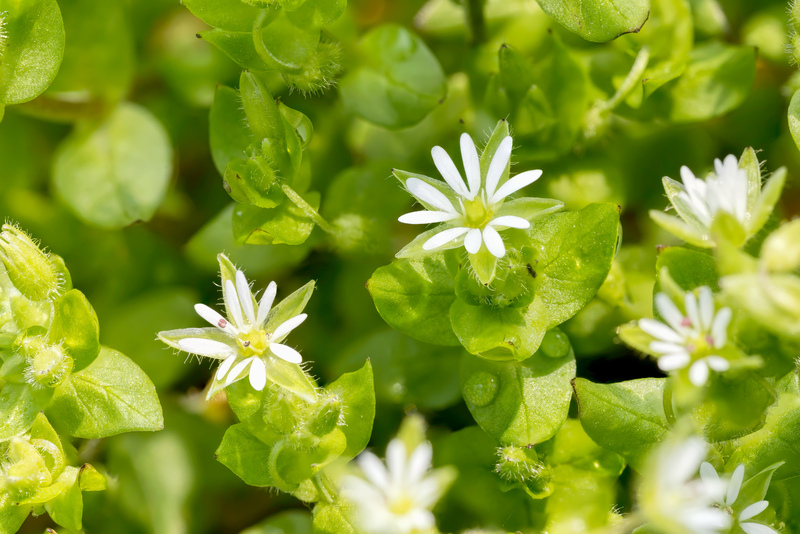Your First Lawn: Must-Know Care Tips to Achieve Stunning Results
Establishing and maintaining your first lawn can feel overwhelming, but with the right strategy and care tips, you can transform your yard into a lush, green oasis. Whether you're a new homeowner or simply new to lawn care, this comprehensive guide will walk you through all aspects of achieving a beautiful lawn--from soil prep and seeding to watering, mowing, and fertilizing. Let's dive into the essentials for creating a vibrant, healthy landscape that you'll be proud of!
Understanding Your Lawn: The Foundation for Success
Before grabbing your tools and seeds, it's vital to understand your lawn's basic needs. The secret to a beautiful, thriving grass yard is knowing what factors affect its health and appearance.
Assess Your Lawn Site
- Sunlight: Observe how much sunlight different areas receive. Most turfgrass needs at least six hours of direct sun daily. Shaded yards may require shade-tolerant grass varieties.
- Soil Condition: Test your soil's pH (ideal range: 6.0-7.0) and nutrient levels. Local garden centers or extension offices offer soil testing kits.
- Drainage: Watch for puddles and soggy spots. Good drainage prevents diseases and root rot.
Select the Right Grass Type
Different climates and conditions call for different grass species. Popular options include:
- Cool-season grasses: Kentucky bluegrass, fescue, ryegrass (best in northern climates)
- Warm-season grasses: Bermuda, zoysia, St. Augustine (thrive in southern regions)

Preparing Your Lawn: Set the Stage for Growth
Proper preparation ensures your new lawn receives an optimal start, supporting strong roots and dense, healthy grass.
Step 1: Clear the Area
- Remove debris: Pick up rocks, sticks, and old roots. Dispose of unwanted weeds or previous turf.
- Level the ground: Use a rake and leveling tools to create an even surface, filling in low areas.
Step 2: Improve Soil Quality
- Loosen the soil: Use a rototiller or garden fork to break up compacted soil to a depth of 4-6 inches.
- Add amendments: Based on your soil test, incorporate compost, peat moss, or sand to improve fertility and texture.
- Fertilize: Mix in a starter fertilizer high in phosphorus to promote root growth.
Step 3: Seeding or Sodding
- Seeding: Spread grass seed evenly using a broadcast spreader. Rake lightly to cover seeds with a thin layer of soil, then gently firm the ground.
- Sodding: Lay sod strips tight together, stagger the seams, and press each piece down firmly to eliminate air pockets.
Watering: The Secret to a Lush First Lawn
For new lawns, consistent moisture is essential. Watering is often where beginners fall short, either by overwatering or not watering enough. Here's how to get it right:
Best Practices for Watering Your New Lawn
- Frequency:
- Grass seed: Water daily--sometimes twice a day--until germination, keeping the top inch damp but not soaked.
- Sod: Water twice daily for the first two weeks, then gradually reduce frequency as roots establish.
- Amount: New lawns generally need about 1 inch of water per week, including rainfall. Use a rain gauge or empty can to monitor water applied.
- Timing: Water early in the morning to minimize evaporation and discourage disease.
Remember: Proper watering encourages deep roots and builds resilience against drought and disease.
Mowing: Keep Your Lawn Looking Sharp
Correct mowing practices are essential for achieving a perfect first lawn. Mowing too short or with a dull blade stresses turf and can invite weeds.
Mowing Tips for New Lawns
- Wait until grass is tall enough: Mow the first time when your new grass reaches 3-4 inches, cutting no more than the top 1/3 of the blade.
- Grass height: Most lawns look best kept at 2.5-3.5 inches. Taller grass shades soil, conserves moisture, and resists weeds.
- Keep blades sharp: Dull blades tear grass, causing brown tips and increasing susceptibility to disease.
- Alternate mowing patterns: Change direction each time to prevent soil compaction and support upright growth.
Fertilizing: Feed Your Lawn for Lasting Health
Fertilizing provides essential nutrients for your grass to develop a thick, green carpet. For your first lawn, proper fertilization establishes strong roots and vibrant growth.
When and How to Fertilize
- Starter fertilizer: Apply before or immediately after seeding or sodding to support root establishment.
- Main feedings: For cool-season lawns, fertilize in early spring and fall. For warm-season lawns, late spring and summer are ideal.
- Application: Use a broadcast or drop spreader for even coverage, and follow label instructions for rates.
Tip: Never fertilize during dormancy or on stressed grass, as this can damage your new lawn.
Weed and Pest Control: Keeping Your First Lawn Pure
Weeds and pests can undermine your efforts. Early vigilance is key to maintaining a stunning, weed-free yard.
Preventing and Managing Weeds
- Thick, healthy turf: The best weed prevention is a dense, vigorously growing lawn.
- Spot-treatment: Hand-weed small patches or use targeted herbicides after your lawn is well established--usually after the third mow.
- Pre-emergent products: These discourage weed seeds from sprouting. Apply only after your grass is established and follow all instructions.
Dealing with Pests and Diseases
- Encourage biodiversity: A mix of grass types and good cultural practices (proper mowing, watering, fertilizing) boost resilience against lawn pests.
- Watch for trouble signs: Yellow patches, chewed blades, or unusual growth can indicate insect or disease problems. Consult your local extension office for diagnosis and treatment recommendations.
Essential Tools for Lawn Care Success
- Lawn mower: Choose a model suited to your yard's size and terrain.
- Garden rake: Helpful for removing debris and leveling soil.
- Spreader: Use for seed and fertilizer application.
- Hose and sprinkler: Ensure adequate coverage, especially for new seed or sod.
- Edger or trimmer: Keeps boundaries clean and sharp.
Seasonal Lawn Care Calendar for First-Time Owners
Spring
- Rake away debris and dead grass.
- Aerate compacted soil if needed.
- Apply pre-emergent weed control (post-establishment).
- Apply spring fertilizer and overseed thin spots.
Summer
- Mow regularly, keeping blades 2.5-3.5 inches tall.
- Water deeply during dry spells in early morning.
- Monitor for pests and diseases--treat early.
Fall
- Aerate and overseed to repair any damage.
- Apply a fall fertilizer for root development.
- Keep mowing as long as grass grows.
Winter
- Stay off dormant grass to avoid damage.
- Clear leaves and debris to prevent smothering.
Common Mistakes to Avoid with Your New Lawn
- Overwatering or underwatering: Strive for consistent moisture--not sogginess or dryness.
- Cutting too short: Scalping stresses grass and invites weeds.
- Skipping soil testing: Without knowing your soil's needs, you can't optimize for strong grass growth.
- Over-fertilizing: Too much fertilizer burns tender young roots.
- Neglecting equipment maintenance: Dull mower blades and faulty spreaders can sabotage your results.

Expert Tips for Achieving a Stunning First Lawn
- Stay patient: A new lawn takes time to fully establish--don't give up if it's not perfect instantly.
- Keep records: Note watering, mowing, and fertilization dates to help refine your care routine.
- Learn and adjust: Watch for changes in growth and color. Adapt your care to shifting weather and your lawn's needs.
Conclusion: Enjoy Your Beautiful First Lawn Year After Year
Caring for your first lawn is a rewarding journey. By following these must-know lawn care tips, you'll lay the groundwork for a thriving, prized lawn that transforms your home's curb appeal and provides a relaxing outdoor retreat. Remember, consistency and attention to the fundamentals--soil, water, mowing, and nutrients--are the keys to stunning results.
Invest in your lawn, learn as you go, and soon you'll have a green space to enjoy season after season.